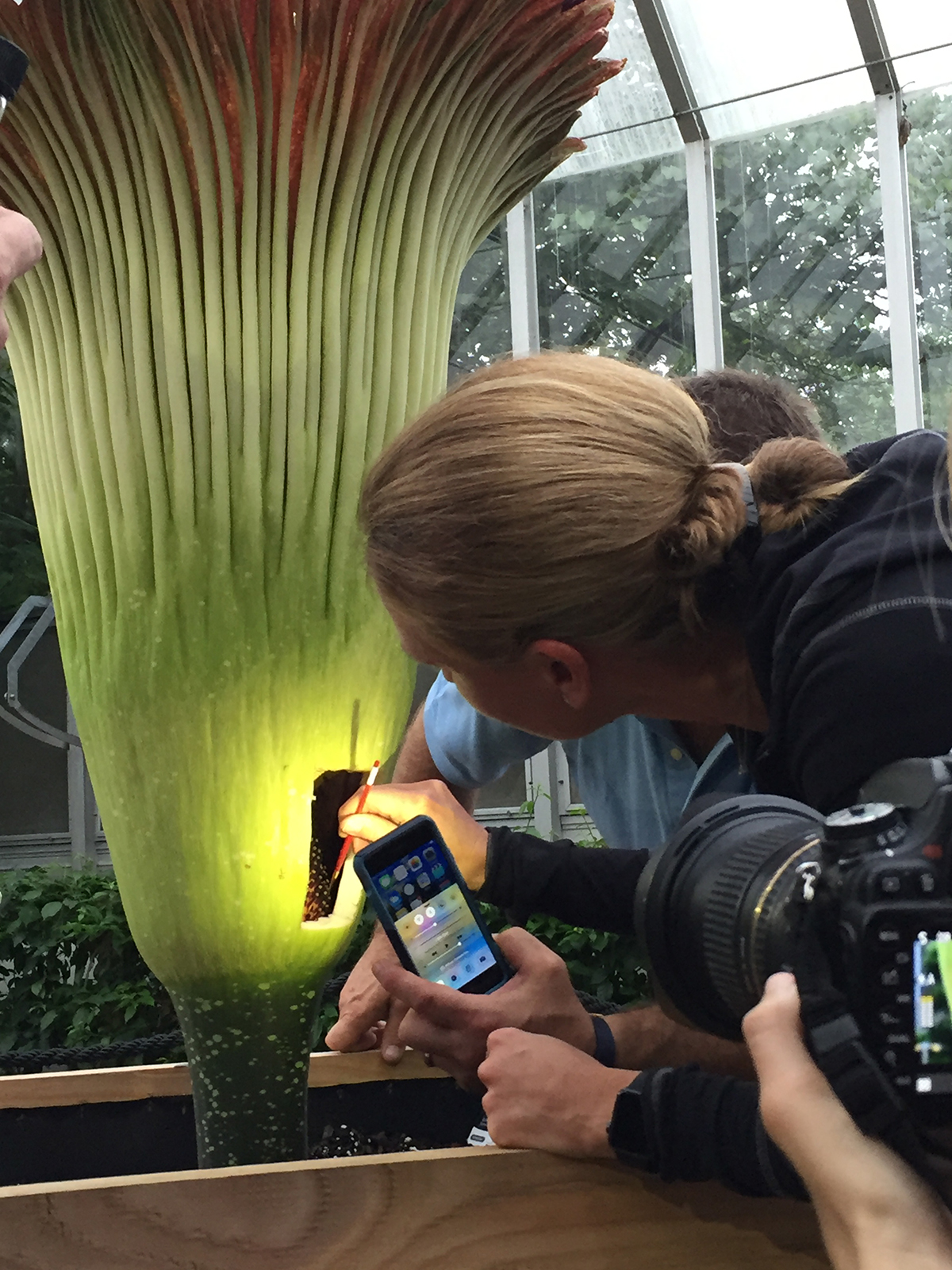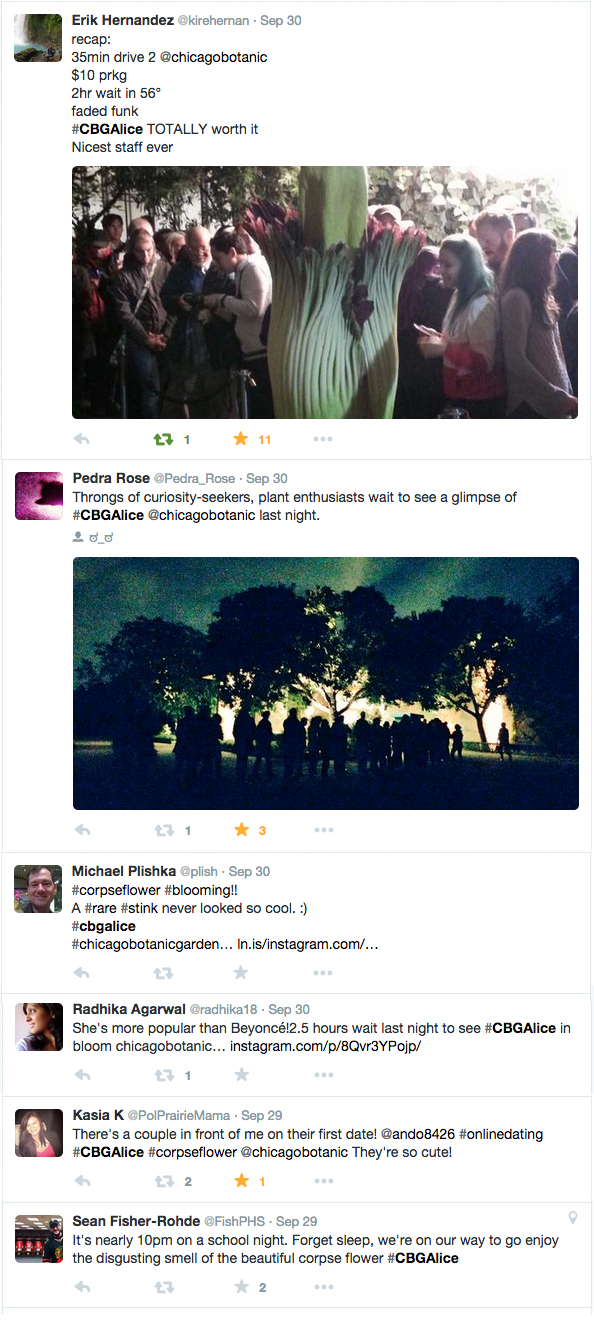Having recently experienced the magical bloom of our titan arum Alice the Amorphophallus at the Chicago Botanic Garden, we were reminded of the pure joy that plants can bring.
Alice provided special moments for many people—including me.
On September 28, at 12:51 a.m., I received a text from the Chicago Botanic Garden’s senior director of marketing, Jennifer Napier. All night, she had been watching the feed from a camera trained on the plant we hoped would yield the result that our first titan arum, Spike, did not. She texted because she had noticed something incredible: Alice was blooming.

That’s me! Pollinating Alice the Amorphophallus took steady hands and quite a bit of concentration.
What a wonderful surprise. I took a breath and thought: This is it. This is what so many dedicated horticulturists at the Garden have been waiting for, and watching for, with our collection of eight titan arums over these last 12 years.
I arrived at the Garden just after 3 a.m.—my headlights reflecting in eyes of the raccoons who call our 385 acres home—and was let in by the third-shift security officers who keep the Garden safe at night.
At the Semitropical Greenhouse, I met outdoor floriculturist Tim Pollak, “Titan Tim,” and we breathed in the plant’s horrible, wonderful smell. Tom Zombolo, senior director, facilities and maintenance, joined us soon after. I don’t have scientific evidence to support this, but it was my impression that Alice “knew” we were there; maybe our warmth and carbon-monoxide exhales made the plant believe we were pollinators? I don’t know, but in the several minutes following our greenhouse entry, we perceived that Alice’s rotten scent became even more intense. There would be a lot of activity very soon, but we shared a quiet moment to reflect on this rare phenomenon and the extraordinary dedication of so many to reach this point.
Later, thanks to Tim and scientists Shannon Still and Pat Herendeen, I had the chance to hand-pollinate Alice with pollen supplied by “Spike” and our friends at the Denver Botanic Gardens. That moment was one of the most exciting and moving experiences of my life.
Alice was on view until 2 a.m. that night, and visitors of all ages patiently stood in line up to three hours to see, and smell, the corpse flower. I was grateful for the Garden operations staff, led by Harriet Resnick, who—in ways large and small—made the experience so satisfying for our visitors. More than 20,000 people visited Alice, and it was such a happy occasion for all.

Twitter tells the story: #CBGAlice inspired and amazed visitors September 29-30.
Alice has now returned to the production greenhouse, joining the seven other titan arums in the Garden’s collection. Will serendipity happen again with another corpse flower bloom? Nature will determine that. But I do know these kinds of special moments truly reflect the power of plants to educate, inspire, and bring joy.
Help us harness the power of plants to engage our senses and our communities—sponsor a program through our Annual Fund today.

